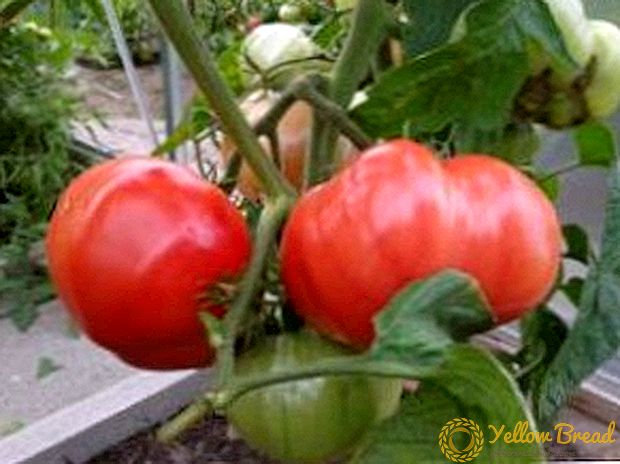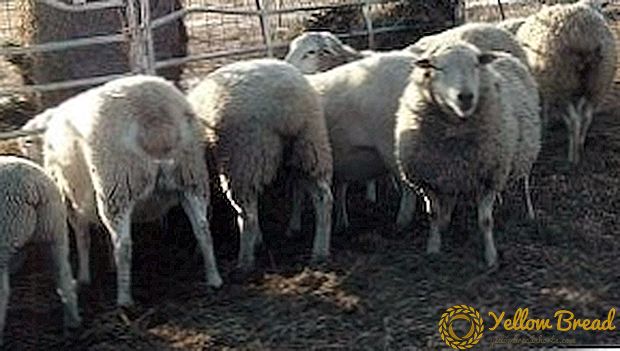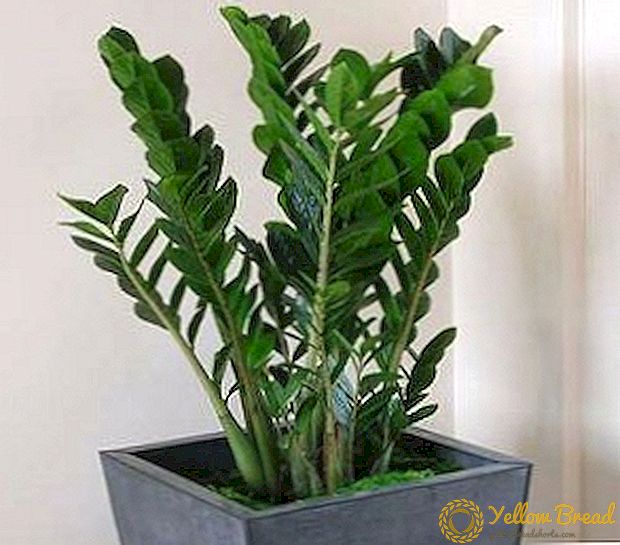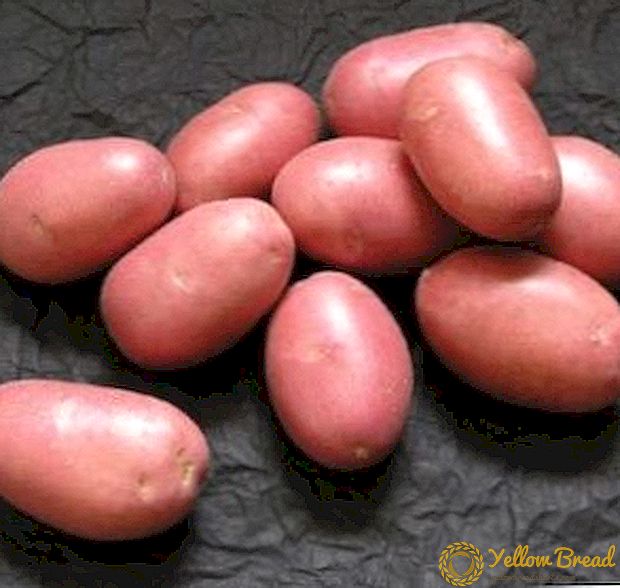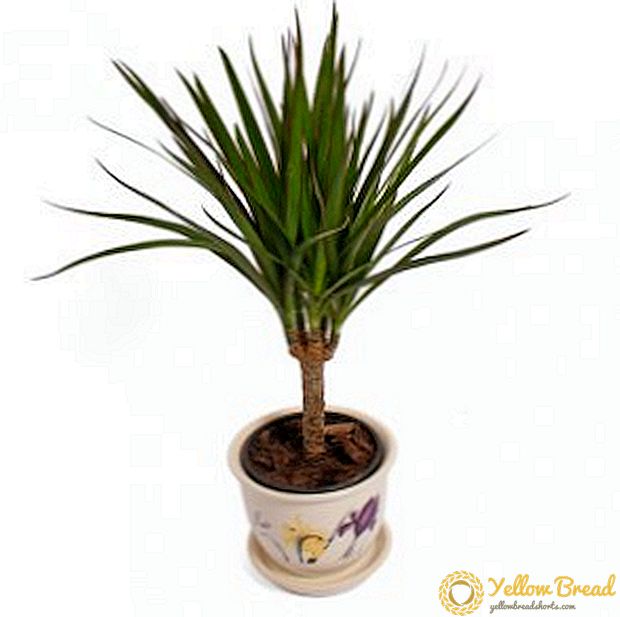 Myrtle is a very interesting representative of the flora. About him there are many legends and legends, it is used in perfumery, for medicinal purposes, used as a seasoning. Also, myrtle has phytoncidal properties, which means that it brings not only beauty into the house, but also heals the air in it. If you intend to acquire this miracle plant, then we give you some useful information about it.
Myrtle is a very interesting representative of the flora. About him there are many legends and legends, it is used in perfumery, for medicinal purposes, used as a seasoning. Also, myrtle has phytoncidal properties, which means that it brings not only beauty into the house, but also heals the air in it. If you intend to acquire this miracle plant, then we give you some useful information about it.
- Myrtle ordinary: description
- Climatic conditions for the plant
- Features flowering myrtle, why the plant does not appear flowers
- Watering and feeding myrtle
- How to properly trim and shape a mini tree
- When to replant a plant, and how to do it
- Reproduction of myrtle
- How to grow myrtle from seed
- Reproduction myrtle cuttings
Myrtle ordinary: description
 Of the more than a hundred species of myrtle, for cultivation at home, usually choose common myrtle, which came to us from the Mediterranean. It is an evergreen shrub, reaching about 2 meters high. The leaves are small (~ 5 × 2 cm), entire, shiny, green, of a dark shade, with a pointed tip and base, growing on short cuttings opposite each other. When looking at the lumen are visible points filled with essential oil.
Of the more than a hundred species of myrtle, for cultivation at home, usually choose common myrtle, which came to us from the Mediterranean. It is an evergreen shrub, reaching about 2 meters high. The leaves are small (~ 5 × 2 cm), entire, shiny, green, of a dark shade, with a pointed tip and base, growing on short cuttings opposite each other. When looking at the lumen are visible points filled with essential oil.
Flowers are small (~ 2 cm across), white, yellow, pale pink with lots of golden stamens. Have 5 petals, single, bisexual. The plant has a pleasant pine-citrus scent. Fruits are pea-sized, round or oval berries, black or white, with 10-15 seeds each.
Climatic conditions for the plant
 Since under natural conditions, myrtle grows among bushes or in oak and pine forests, it is necessary to ensure appropriate temperature and lighting in order to grow myrtle in domestic conditions. In the spring and summer period of growth, a moderate temperature of up to + 24 ° C will suit the plant. At this time, it should also provide bright lighting without direct sunlight.
Since under natural conditions, myrtle grows among bushes or in oak and pine forests, it is necessary to ensure appropriate temperature and lighting in order to grow myrtle in domestic conditions. In the spring and summer period of growth, a moderate temperature of up to + 24 ° C will suit the plant. At this time, it should also provide bright lighting without direct sunlight.
Features flowering myrtle, why the plant does not appear flowers
The period of flowering myrtle falls in the summer, usually in June. But if your plant has not yet bloomed - do not be discouraged, because the first flowers on it will appear no earlier than 4-5 years. Slightly faster can bloom plants from cuttings. Other causes of lack of flowering are often excessive circumcision, lack of ventilation, lack of sun or high winter temperatures.
Watering and feeding myrtle
 In the period from spring to autumn, the plant must be periodically sprayed; watering should be regular and abundant. It is not recommended to overdry the land, as well as to water the myrtle too often, as this leads to falling off of the foliage, and, more often than not, the plant cannot be saved. Make sure that the water in the pan does not stagnate.At the same time, the plant should be fed every 1-2 weeks.
In the period from spring to autumn, the plant must be periodically sprayed; watering should be regular and abundant. It is not recommended to overdry the land, as well as to water the myrtle too often, as this leads to falling off of the foliage, and, more often than not, the plant cannot be saved. Make sure that the water in the pan does not stagnate.At the same time, the plant should be fed every 1-2 weeks.
Take fertilizers with a high content of phosphorus, especially if your goal is a flowering myrtle, and if decorative properties are more important for you, then fertilizer with nitrogen is well suited. After transplanting, do not fertilize the plant for about 6 weeks.
In winter, the plant is not sprayed, watering is reduced, and at low temperatures should be watered once a month. Water taken filtered or separated, soft. Do not feed.
How to properly trim and shape a mini tree
With the help of pruning, you can easily change the appearance of the myrtle, give it various forms, it will also help the emergence of side shoots. Mirth calmly carries such a procedure, but do not do it too often, so as not to interfere with flowering. Pruned should be in early spring or autumn, after the plant has faded.
To form a mini-tree, trim the side shoots until the myrtle grows to the desired height, then you can trim the top and give the crown a rounded shape. Next, continue to cut the side shoots from the bottom.
When to replant a plant, and how to do it
Caring for myrtle tree also provides for a regular transplant. Young plants that have not reached 5 years of age should be replanted every spring when new leaflets appear. To do this, take the pot a couple centimeters larger than the previous one and prepare the soil from a mixture of sand, peat, turf, leafy soil and humus in equal proportions. Adult myrtle is transplanted every 2-4 years, but in between (in spring and autumn), the upper layer of the substrate is changed. For the mixture take the same components, only the sod land needs twice as much.
Reproduction of myrtle
Myrtle can be propagated in two ways:
- seeds
- vegetatively (cuttings)
How to grow myrtle from seed
 You can sow from the end of winter to mid-May, and with the possibility of using fluorescent lamps - all year round. Take fresh seeds, rinse in a weak solution of potassium permanganate and dry. Choose a sowing capacity of 7-10 cm deep.
You can sow from the end of winter to mid-May, and with the possibility of using fluorescent lamps - all year round. Take fresh seeds, rinse in a weak solution of potassium permanganate and dry. Choose a sowing capacity of 7-10 cm deep.
Take equal proportions of peat and sand / vermiculite and prepare the substrate. Moisten it with water or fungicide.Plant seeds to a depth of half a centimeter and cover with glass or film, put in a bright place without direct sunlight. Maintain a temperature of about + 20 ° C.
Reproduction myrtle cuttings
 This breeding method is simpler than the first. It is conducted from January to February or at the beginning of summer. With a non-flowering myrtle, cut cuttings 5–8 cm long. Each of them should have 3-4 pairs of leaves. Remove the lower half of the leaves, and shorten the rest. Immerse the cuttings in a growth stimulator for 1 cm for two hours, and then rinse with water.
This breeding method is simpler than the first. It is conducted from January to February or at the beginning of summer. With a non-flowering myrtle, cut cuttings 5–8 cm long. Each of them should have 3-4 pairs of leaves. Remove the lower half of the leaves, and shorten the rest. Immerse the cuttings in a growth stimulator for 1 cm for two hours, and then rinse with water.
Use the same substrate as for sowing, only plant cuttings to a depth of 2-3 cm. Then everything should be done, as in the first method of reproduction. When the cuttings take root (in 2-4 weeks), transplant them into separate containers about 7 cm deep.
So, you were presented with information on how to care for myrtle ordinary.This is a useful and beautiful plant, although it has some features of cultivation.


